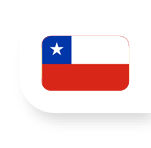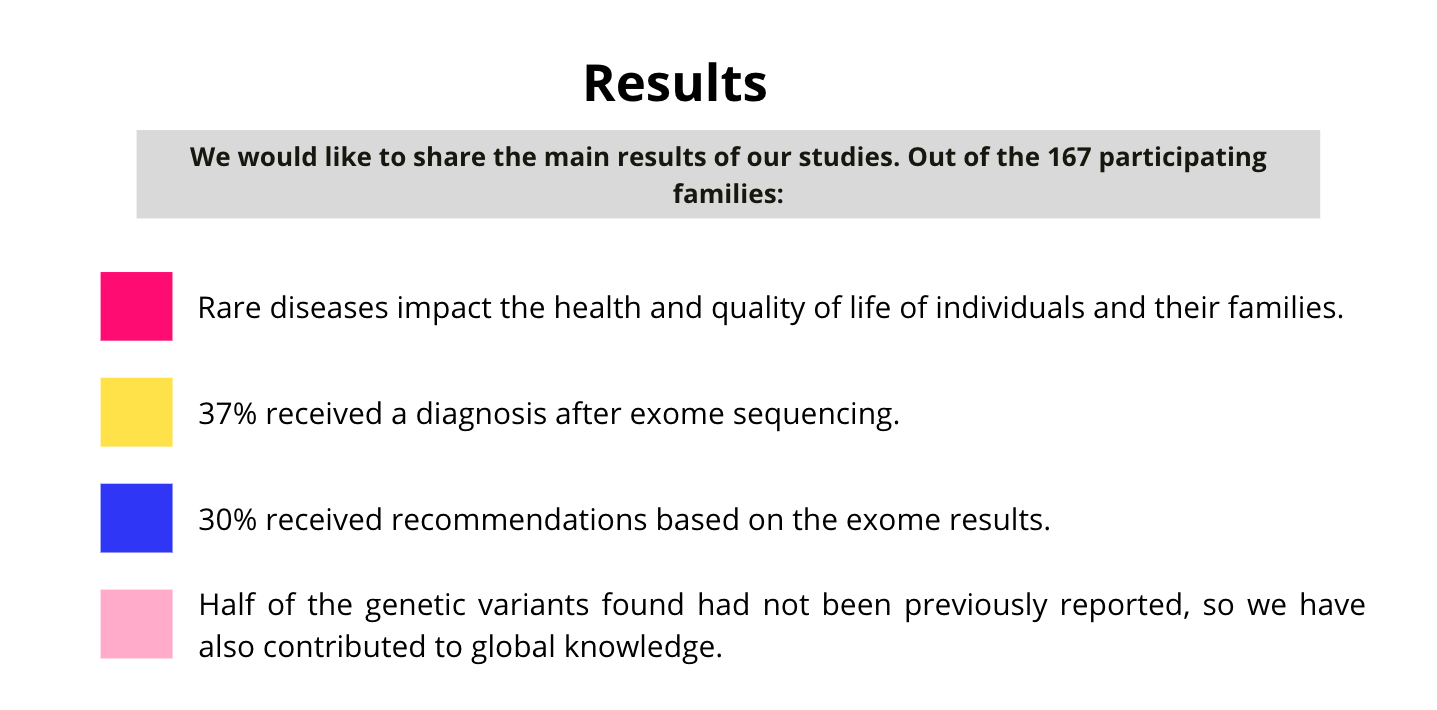

We are an interdisciplinary team and organize our work in three areas:
Approximately 70-80% of individuals living with a rare disease have it as a result of a genetic cause. Genes are our “instruction manual” for the formation and functioning of our bodies. Our team uses laboratory techniques that enable us to read the letters of these genes (called “massive parallel sequencing” or “next generation sequencing”-NGS)), and then utilize computational tools (“bioinformatics”) to search for variants or differences in these letters that can help us understand the cause of a rare disease in a person.
Starting with a blood sample from that person, and ideally also from their biological parents (“trio”), we sequence the approximately 30 million letters or base pairs that form the coding of a human’s almost 20.000 genes (“exome”). The genetic information from the parents of a person with a rare disease helps us understand and interpret the familial similarities and variation in their genes. We search, among the thousands of variants that are part of our normal differences, like a needle in a haystack, for genetic variants that could cause the disease
Major health decisions are always very difficult to make because they involve overt costs, and opportunity costs that may go unrecognized. The opportunity cost in health, in simple words, means that allocating resources to one person inevitably implies not giving attention/resources to another. Since prioritization is unavoidable, transparent processes are critical to enable public scrutiny and legitimate process. Many countries have implemented health technology assessment processes as a decision-making tool. But these processes are complex to implement when it comes to rare diseases and even more so for undiagnosed diseases, which are invisible to the health system. In general, the small number of rare disease patients and the high development costs of new technologies imply limited incentives for industry to invest in developing these tools. As a result, the high costs of diagnosis and treatment are beyond the reach of most patients, which leads to inequalities in access to new technologies, and thus to accurate diagnosis and treatment options.
In this project, we will develop a value framework that can be used by decision makers to address the issue of access to new, often high-cost, technologies for people with rare diseases. This value framework will integrate critical factors for decision making, including efficiency, preferences, and financial aspects (sustainability). A critical element for the value framework aims to enable progress towards replicable and, above all, transparent processes.
Rare diseases impact not only those who live with them, but also their caregivers, families, and communities. Through the application of questionnaires, interviews and standardized scales of quality of life related to health (EQ-5D) and caregiver overload (Zarit). We seek to learn about and understand how individuals with rare disorders and their caregivers live and perceive their lives, as well as the changes that can occur before and after receiving a diagnosis and the introduction of therapeutic decisions based on it.
Based on qualitative methodologies, we will delve into the impact that the often-difficult journey, or “odyssey”, in search of a diagnosis and adequate treatment has on patients and their families, discovering their points of view and making their needs and demands visible to the medical and social communities. We aim to reveal experiences of therapeutic trajectories including odysseys, tacit knowledge, and psychosocial effects of living with rare health conditions, with and without diagnosis, from the perspective of the same people, caregivers, health teams, and leaders of civil organizations.

